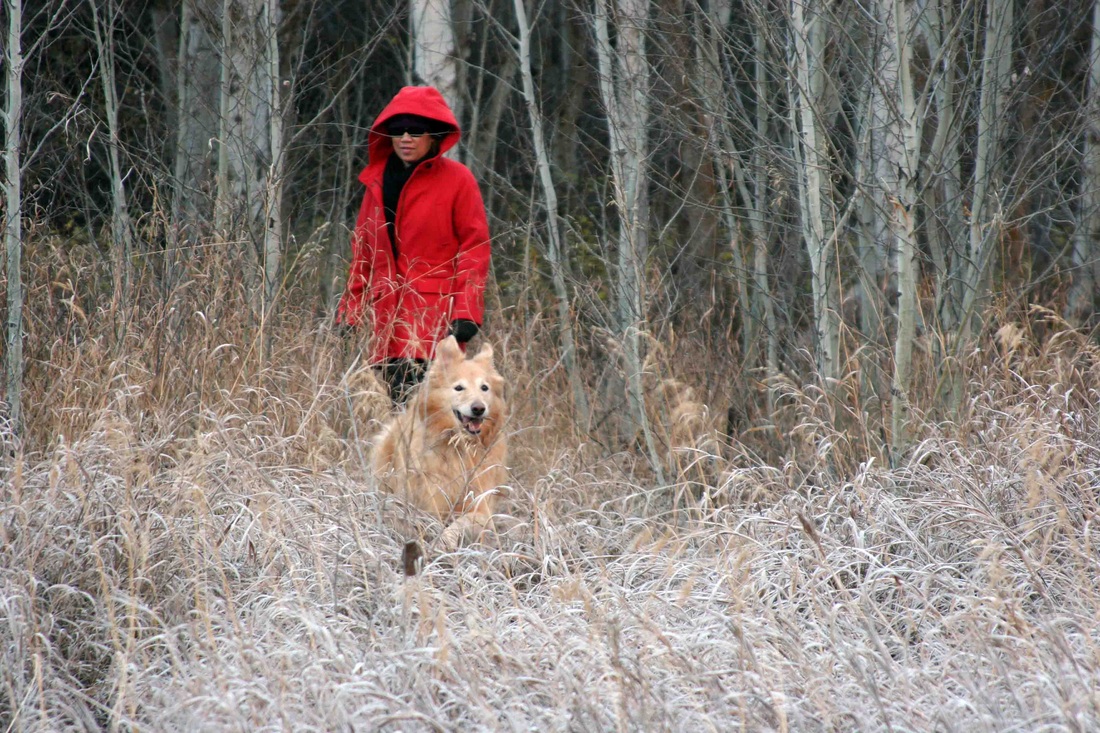|
Escape From the Apple Maggot Quarantine
Apple maggots are not welcome in central Washington despite the contrary signage announcing “ENTERING APPLE MAGGOT QUARANTINE AREA: DO NOT TRANSPORT HOME GROWN FRUIT BEYOND THIS POINT.” Why quarantine apple maggots to the most productive apple growing land in the world? How’s that work? Are apple maggots themselves a big export commodity to be safeguarded? Maybe they’re a third world delicacy or something? Not that I’m aware of. Apple maggots are actually quarantined on the other side of the Cascade mountain range, or western washington where they are more likely to thrive. Anyway, these days I drive the two lane highways along the Columbia River that form the spine of the Columbia Basin (or, apple maggot quarantine corridor). I take produce, apples predominantly, but also pears, cherries, apricots, onions, potatoes, carrots, the occasional rhubarb, frozen blueberries and put them on a train heading east. (One day I loaded blueberries to go back east (Michigan I think) then delivered blueberries from back east.) Like most places, the further away from the interstate you go (I-90 in our case) the more interesting the country gets. Central Washington, as viewed from I-90, is like glimpsing a gorgeous woman dressed for winter: you suspect there is much more than what meets the eye. (Then again, central Washington’s a bit wild and unabashedly displays the Columbia River Gorge as if posing for a Georgia O’Keefe painting.) There’s the dramatic physical beauty of the Columbia River gorge, the river itself, the Cascade Mountain foothills, the granite spires of the Stewart range over Ellensburg, the volcanoes Rainier and Adams in the Yakima Valley, fruit orchards in bloom or with fruit, grape rows stretching up the hills, and plenty more. Add in the interesting and mysterious, such as a violent geological past, or the Hanford Nuclear Reservation, and you realize central Washington isn’t your average beauty queen. Mountains are the obvious beauty markers, but it goes deeper than that. Volcanic activity and cataclysmic flooding violently reshape central Washington quite often (geologically that is). According to the USGS there are 14 major volcanoes in the state of Washington, hundreds of smaller ones, and for awhile there we had cracks in the earth’s crust where lava oozed over greater eastern Washington and Oregon. On top of all that we get the biggest, most vicious floods the world has ever seen when Pleistocene era ice dams in Idaho/Montana burst and scour our landscape. Had God wanted Noah to go whitewater rafting he would have sent him on a pilgrimage to Washington. We’re between ice ages, of course, and it’s unlikely that you’ll be lucky enough to see a volcano go off, but then again, every so often they do. Mount Saint Helens blew in 1980 and everybody in eastern Washington old enough to remember has a story. The ash (that didn’t fall and smother eastern Washington, northern Idaho, and western Montana) circled the earth, several times, before dissipating. Scientists say that the eruption packed a punch several hundred times that of the Hiroshima bomb and I guess they’d know since the secret ingredient was produced at Hanford. Mother Nature is pulling her punches these days so in turn my days are fairly tame. Because of our ringside seats to cataclysmic events, we’re (usually) spared merely catastrophic events such as tornadoes, hurricanes, monstrous blizzards (once in a great while, sure, but usually not). That’s not to say we don’t have to pay attention to weather hazards, because we do get snow, and we do go over Snoqualmie Pass which is notoriously avalanche prone. But typically driving conditions are good. Central Washington is in a rain shadow thanks to the Cascade Mountain Range which rings out the moisture coming in from the Pacific and dumps it on motorists traversing the passes. This then bathes the middle of the state in sunshine. In less kind words, vast swaths of Central Washington are desert. In truly hurtful words, our most abundant tree species is the telephone pole. Regardless, there is plenty of beauty. For instance, on many days (occasionally daily) I’ll see bald eagles, elk, coyotes, deer, sasquatches (kidding) and if I go towards Portland, wild horses and big horn sheep. Sometimes even the domesticated animals are entertaining: once I had to stop so that sheep dogs could herd sheep across the highway. So, there you go. Visit Central Washington - shop, dine, stay, but leave your maggots behind. |
|
| Semi Tourist: A Truckers Guide to Fine Dining, Culture, and Adventure |
|
-
Latest Adventures & Ramblings
- Frying Pan to Brain Pan
- The Phone Stall
- Escape From the Apple Maggot Quarantine
- Can You Spare a Cheeseburger
- Rita, Etc.
- Kung Fu Christmas Special
- How Not to Debate Occupiers
- Soylent Green is Peas!
- Subsidy Generation Farms
- Radioactive Rabbit Pellets
- Muslims in Mormonville?
- The Gates of Graft
- Adventures Dredged up from the Scrapheap
- Proposed Washington State Song
- Exit List
- Places to see, things to do
- Home
- Semi Tourism for Stinking Geniuses
- SemiTourist Photos
-
Maps: Overview Map
- Full On Tourist (w/o Truck)
- Fine Print & Contact Info
- Animals Harmed Making This Site
- Tour de Fantasy Trophy Case
- Widgets from Singletracks!
- Missed Photos

